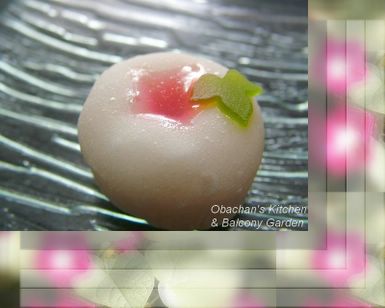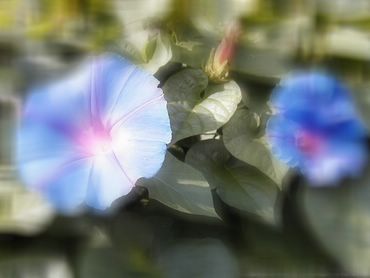 Asagao (Morning Glory) This wagashi caught my eyes because it looked very cute. I was very impressed how the pink pentagon in the center and a tiny leaf can make the white rice cake look undoubtedly like morning glory. But what also caught my eyes was the numerous tiny bubbles in the skin that I usually don't see in wagashi like daifuku-mochi. According to the obachan (maybe the confectioner’s wife?) I talked with at the shop, this mochi-like skin is not regular mochi but something called seppei 雪平. It looks very similar to gyuhi 求肥 (soft and silky mochi made from glutinous rice flour, water and sugar), but seppei is made by adding egg whites and white bean paste to gyuhi, she said. The white bean paste is added to reduce the stickiness of gyuhi, and meringue to make it whiter. Hence, the name seppei 雪平. (The Chinese character 雪 means “snow” and 平 means “flat,” but in this case, something flat implies rice cakes. Thus, the name seppei 雪平 means “rice cake as white as snow.”)  Morning glory is said to have been imported from China to Japan more than 1200 years ago. For those around my age in Japan, morning glory is closely tied to the childhood memories of summer vacation, because we had to grow the plant and keep an observation diary as a homework. It was the task for first or second graders of elementary school, if I remember correctly. * Wagashi by Shingetsu Categories: Wagashi |
Thursday, August 31, 2006
Sweet Seasons / August 2006 - Morning Glory -
Posted by
obachan
at
8/31/2006 11:31:00 PM
![]()
Subscribe to:
Post Comments (Atom)

















2 comments:
He looks so cute!
Yeah, so lovely (and tasty, too).
Post a Comment